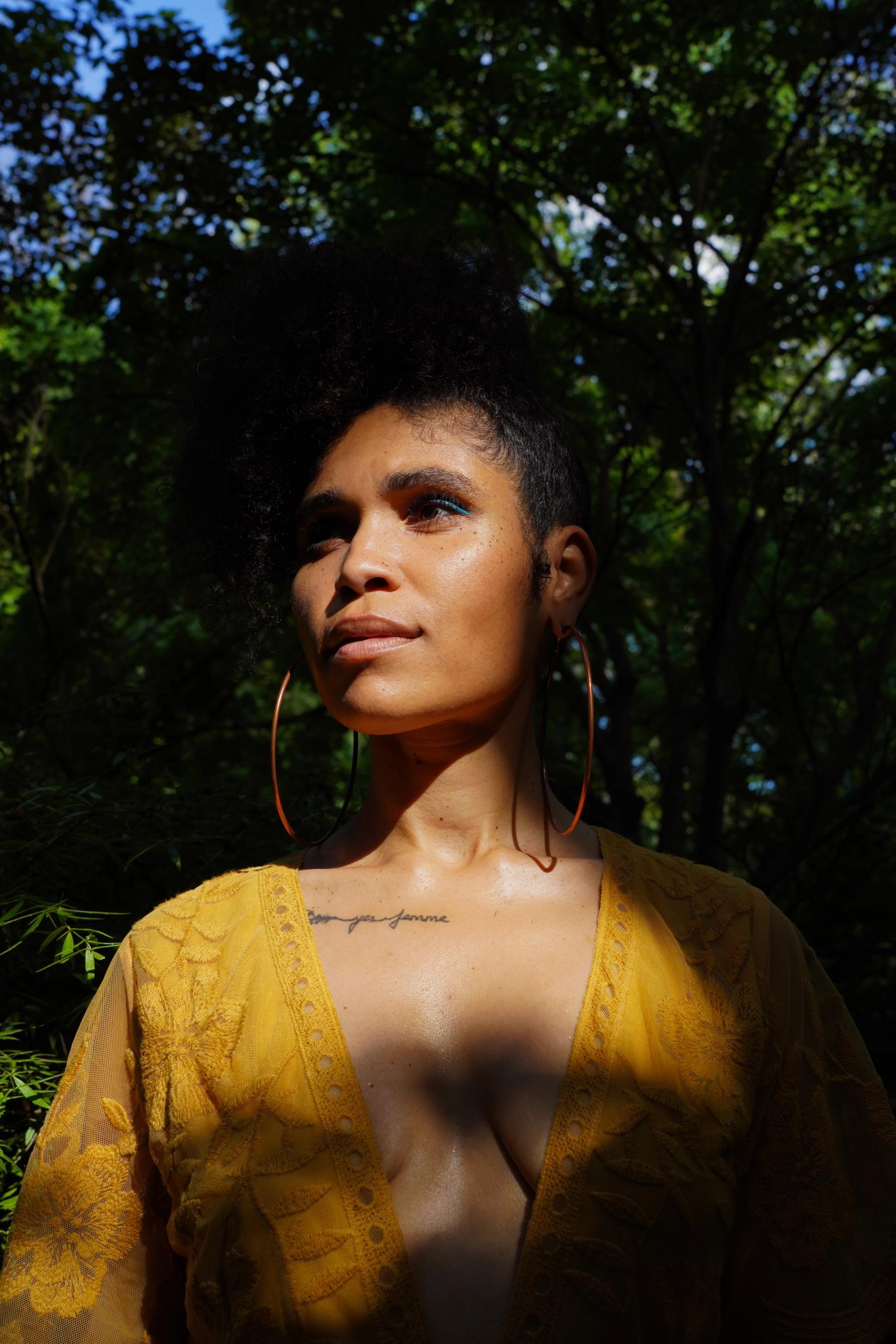
Kirya Yvonne Traber, Salt ’24 (she/her), is a playwright, actress, cultural worker, podcaster, sometimes tarot reader, a graduate of the Salt Radio & Podcasting program, and recipient of the 2024 Spotify Studios Union Scholarship. Kirya generously took the time to speak with us about storytelling, poetry, and Post-it notes.
What drew you to the Salt program in the first place? And how did the Spotify Studios Union Scholarship factor into your decision to come here?
My dear friend Emma Alabaster is an alum of the program. She first introduced me to it as a concept. Before that, we were both audio nerds.
When she went, I asked her to tell me everything. For professional reasons, I wanted to continue skill-building. It was a good time to take a break from New York, where I'd been for almost 14 years, and do a little reassessing. The scholarship was honestly everything. To have four months paid to study, which I love doing, I'm a nerd, and also room and board, was everything.
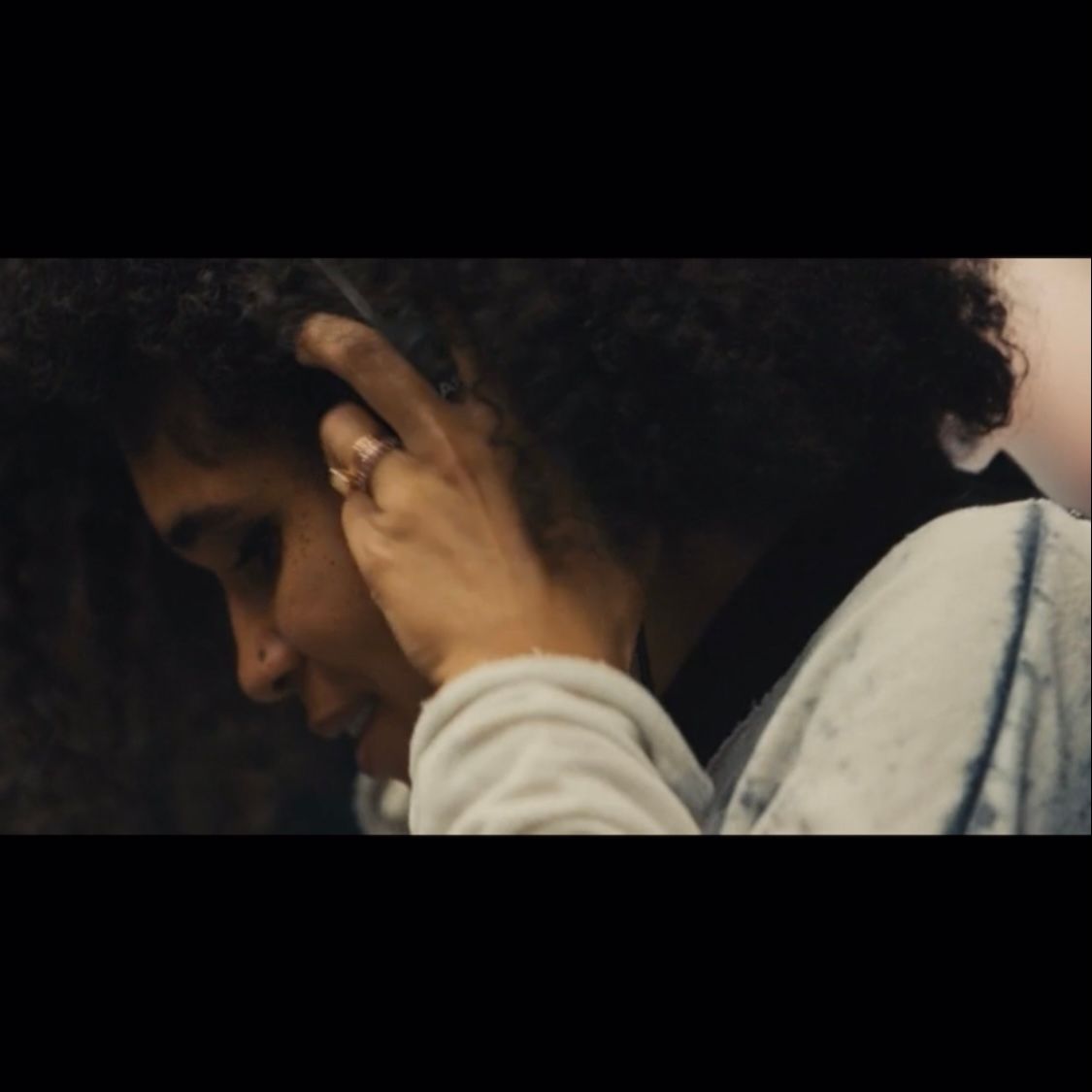
Behind the scenes photo from Spotlight in Purple: The Podcast Season 2, a limited series produced by Kirya Traber, 2023.
How has your work changed as a result of studying at Salt? How has the instruction informed your evolution?
Outside of working in audio, I’m a playwright and working on a novel, so I think a lot about storytelling. I've even taught storytelling to students of various ages. It was great to return to the student position and think about, like, what a story is and to question my own habits.
Audio as a medium has some specific requests of the writer. It asks you to be succinct. There's a particular way you're thinking about the life of the person who's listening. Are they multitasking? Why did they come to your show?
It required me to think about how to shape my own writing more precisely than I've had guidance on in some time.
Then there are the technical aspects of producing audio. Salt is not an entirely technical program, but it provides technical guidance, and my confidence is much stronger than before I completed the program.
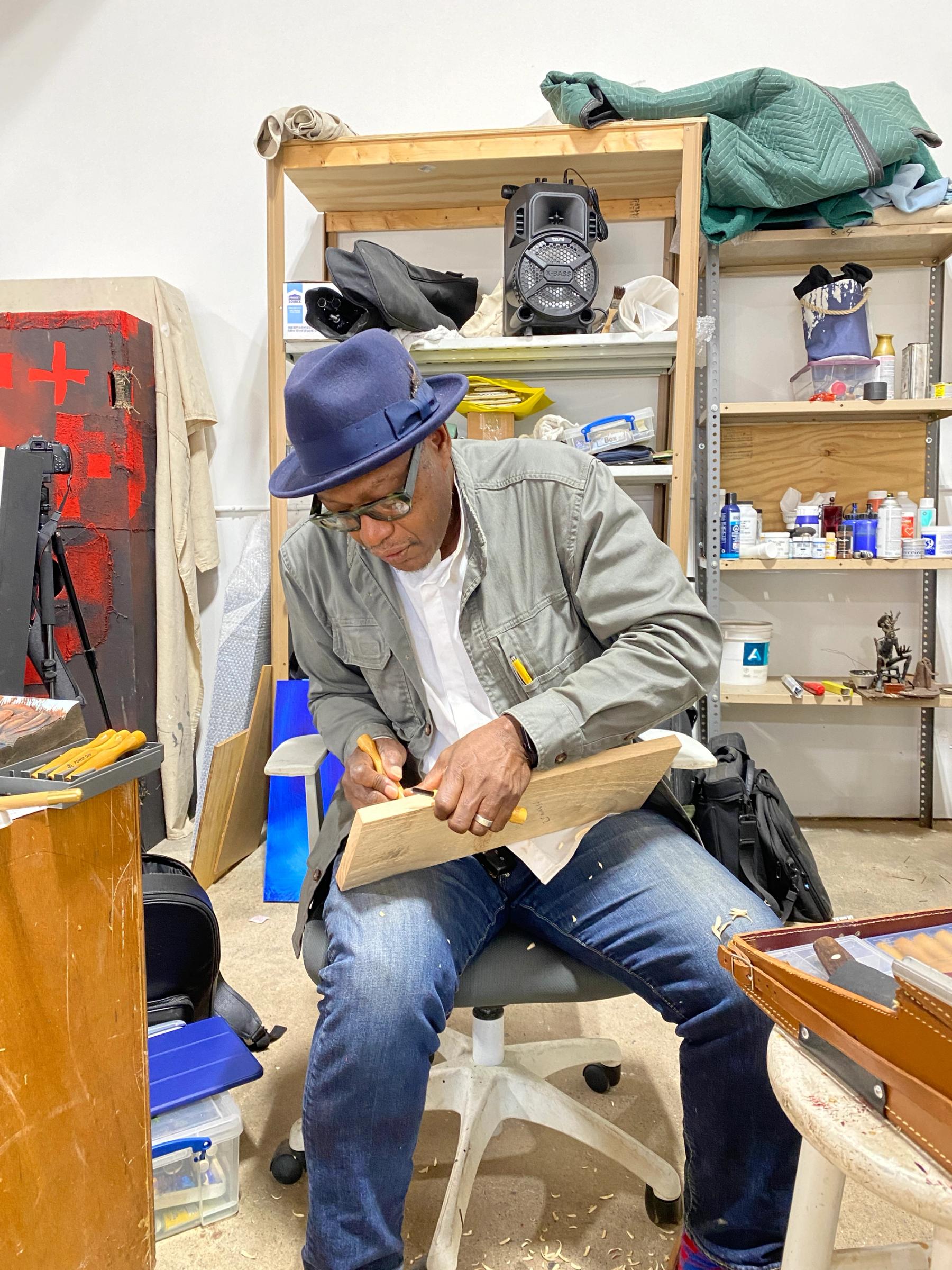
Daniel Minter in his studio, photographed by Kyria Traber, Salt 24 during their interview in fall 2025.
You have two Maine-based stories, one about Daniel Minter and the other about Tiffany Carter Skillings. What drew you to these two people in the first place? And then what did it mean on the other end to have developed those relationships with them?
I care about Black stories, and that's what I write about. Even when my work is multiracial, there's always a Black perspective.
I sought that out in Maine the same way I would anywhere. I was fortunate to find two people who are not only Black but also phenomenal. It felt like fate and luck that I met them both.
I had heard of Indigo Arts, which Daniel [Minter] co-founded, and I was interested in their model. It's a fabulous, world-class organization. Daniel happened to be available to sit with me for a couple of hours. He's an educator, a teacher, and he obviously cares about young artists, which is part of why mentorship is built into Indigo.
When I sat with him, it was so reciprocal. He was so willing and open to my curiosity. I felt like I had gained a new mentor, which was such an unexpected pleasure.
Two weeks before I knew Daniel existed, I had seen an Instagram post about the Smithsonian’s Slave Wrecks Project. This incredible photography of these Black divers underwater seized my heart. I thought, "This is incredible. I don't even swim, and I want to be a part of this."
We didn't talk about it when I met Daniel during our first interview. In the second interview, he said, “Come to my studio”. I asked him, “What are you working on?” And he's like, “Oh, this thing for the Slave Wrecks Project,” and I almost fell out of my chair. This didn't make it in the piece, but on tape, I told him, “I want to be part of it.” He looked me in the eyes and said, “You are a part of it.”
Initially, the story I wanted to tell was not about the Slave Wrecks Project. In the opening of that piece, I said I didn't want to write a piece about slavery. That couldn't have been more true.
He does so much work on African diasporic, Yoruba-derived religious traditions. He practices Candomblé, and he was born and raised in the American South and Georgia. He sees connections between the reverence of indigo, of okra, and of certain relationships to water throughout the diaspora. And that's what I thought I would make a piece about. And then I got seized by the spirit and had to do something else.
Tell me about Tiffany Skillings Carter. How did you come to tell her story?
There was a little bit of fatedness about that as well. My friend in the program started dating someone in the midwifery program that Tiffany is a part of. I didn't know Tiffany existed then, but it's just one of the things about being in Salt.
At Salt, we're all constantly looking for stories because the pace is really fast. Somebody says something interesting, and we're like, “Is that a story?” So when my friend said they went on a date with a midwife, I was like, “Midwifery? I'm interested in that.” I had no idea that Tiffany was the only Black midwife in Maine and north of Massachusetts.
With this piece, I challenged myself not to feature myself in the piece. I practiced what it was like to make a more traditional journalism piece. It was challenging because Tiffany, as you can imagine, is so busy. Some of the answers didn't come together until the final hour, and there was a way that I could have said, “Let me make this about me.”
My aunt had a home birth when I was a kid, and forced my older cousin and me to watch. It changed my life, and it was so important that she had a midwife. So I've been curious about midwifery since then. I have my own complicated journey trying to think about becoming a parent as a queer person. I could have talked about any of that, but I was like, "No, this isn't about me." I want to make a piece about Maine and midwifery.
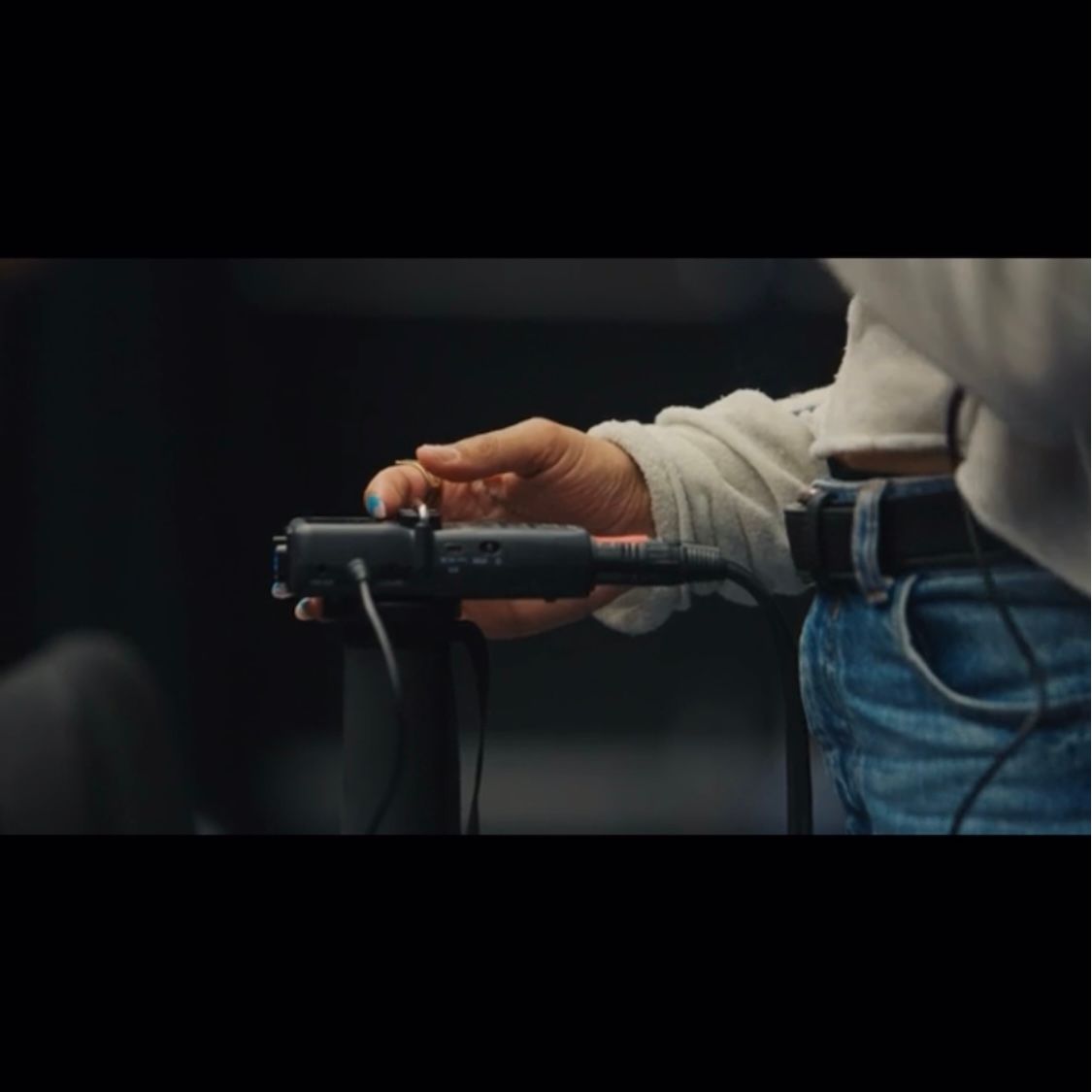
Behind the scenes from Spotlight in Purple: The Podcast Season 2, a limited series produced by Kirya Traber, 2023.
Now that you are on the other side, how do you feel about taking that journalistic approach?
I'm a playwright and a poet, and much of my work is autobiographical. That's something I'm used to doing. I wanted to challenge myself not to just fall back on what I do. I don't want to be a journalist, but I want to allow other people's stories to speak for themselves and share a greater context.
It's challenging to figure out how to talk about issues that are so complex, with so many intersecting factors, and be brief. There's a version of this piece that's 30 minutes or an hour that goes into the intricacies of rural healthcare, licensing, the legal challenges of midwifery, and the tragic stories of Black birthing parents who don't get the care they deserve. I could have made that piece because there's so much there.
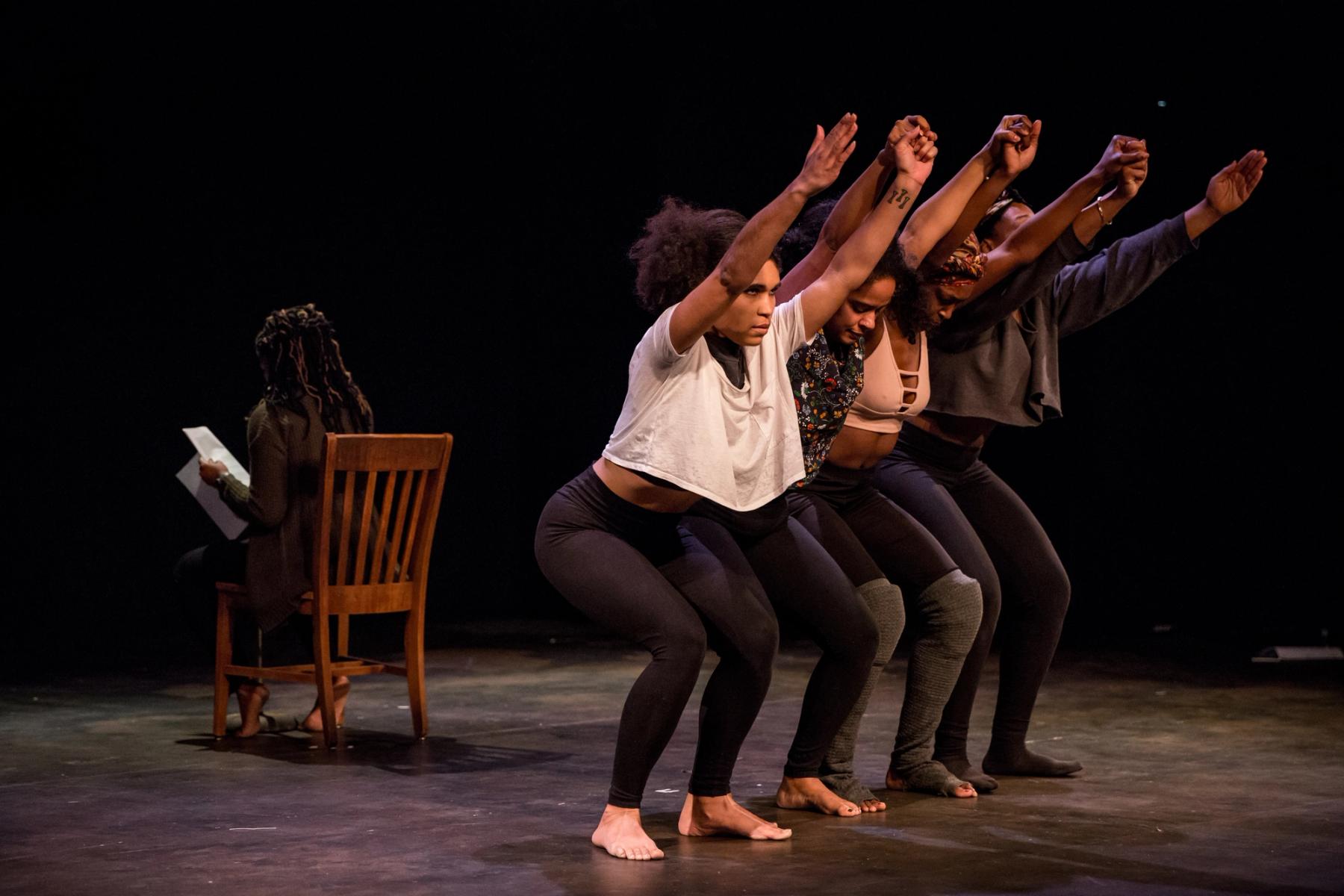
Images from The Journey Between, a devised theatre piece at JagFest 2018.
You've described yourself as a writer, performer, and culture worker. You write plays, make audio, perform, direct, and I'm sure that's just a small portion of the things you do. How do you determine a medium when you're considering telling a story?
Generally, the story tells me what it wants to be. Or the context in which I'm making it. Each of the media does something different for me as a maker.
Writing plays is about dialogue. I've done a lot of docu-theater, which is where you draw from interviews. In that way, it's about collaging dialogue.
Audio is very similar; narrating requires writing between the dialogue and creating a quilt with your own voice and the other people's voices.
My first writing was poetry, which was also my first professional writing. It's what I did as a kid to self-soothe and define myself. Then, in my early 20s, I became a professional poet and joined a poetry community. I was mentored by some incredible writers of our time. When I put that down, I started doing theater and went to grad school for it.
What I learned at Salt is that poetry is my home language. I feel the most comfortable there, and it helps me untangle things. It helps me think about rhythm, make incredible connections between seemingly disparate things, and invite wonder. At the root, it's a love of words and what they can do, not just what they mean but how they sound and how they move.
Whatever I'm doing, I'm a little bit writing poetry.
Are you reading anything that’s keeping you afloat?
Imani Perry, the writer and scholar, has a new book called Black in Blues: How a Color Tells the Story of My People. It's about the color blue as it relates to the African diaspora.
Like me, Imani is in the school of womanists, which means Black women feminists, scholars, and writers. She is so self-assured about what her purpose is, regardless of what's happening in the institutions around her.
And there’s Audre Lorde, Lorraine Hansberry, Alexis Pauline Gumbs, and Nina Simone, who isn't a writer, but there's so much depth in her language choices as a songwriter.
Do you have a favorite tool for working?
I love that question to a writer, because I get it for a visual artist. But for a writer, that's a fun question, because you think, what are my tools? I am a Post-it note queen. I'm surrounded by them.
If you're leaving your house, other than phone keys, wallet, what is always coming with you?
Headphones. Especially in New York.
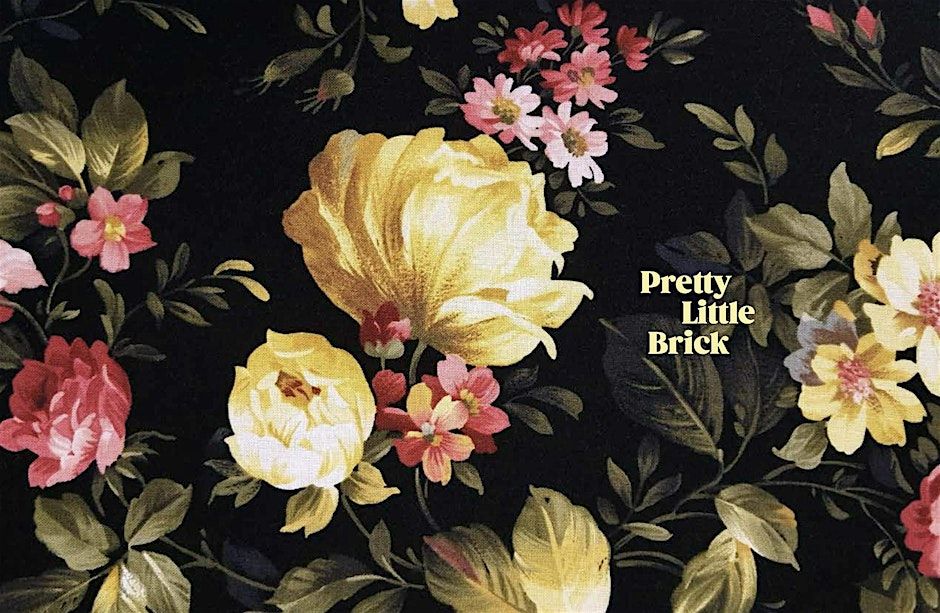
Cover art for Pretty Little Brick: Rituals of Rage, Safety & Pleasure, edited by OlaRonke Akinmowo.
Is there anything coming up that you'd like people to know about?
I was part of a collective called Obsidian, a group of Black women and femme writers based at the Free Black Women's Library in New York. We just published a book called Pretty Little Brick.
It can be really difficult to have community as a writer because it's such an isolating practice. A friend says writers are like cats; they don't do well in groups. They often wander off, and you don't know where they are.
It was fabulous to write in community for a year with these wonderful women and femmes under the guise of being a part of this lineage of Black feminism.
OlaRonke Akinmowo designed the book as a tool of purpose. It's organized in thematic sections around how you might approach a work or what you might need from it. There are coloring pages in the back so you can contribute if you want to.
If you were going to shine a spotlight on someone that you encountered while here at Salt, who would it be?
Well, I'm absolutely in love with my entire cohort. What's really cool about Salt as a program is that it’s a lot of people who are in transitional moments. We ranged from 22 to 41, and were all very different, but in very much pursuit of the same inquiry. And so, everyone has a story.
It's been a really outstanding year for building collective, for me.